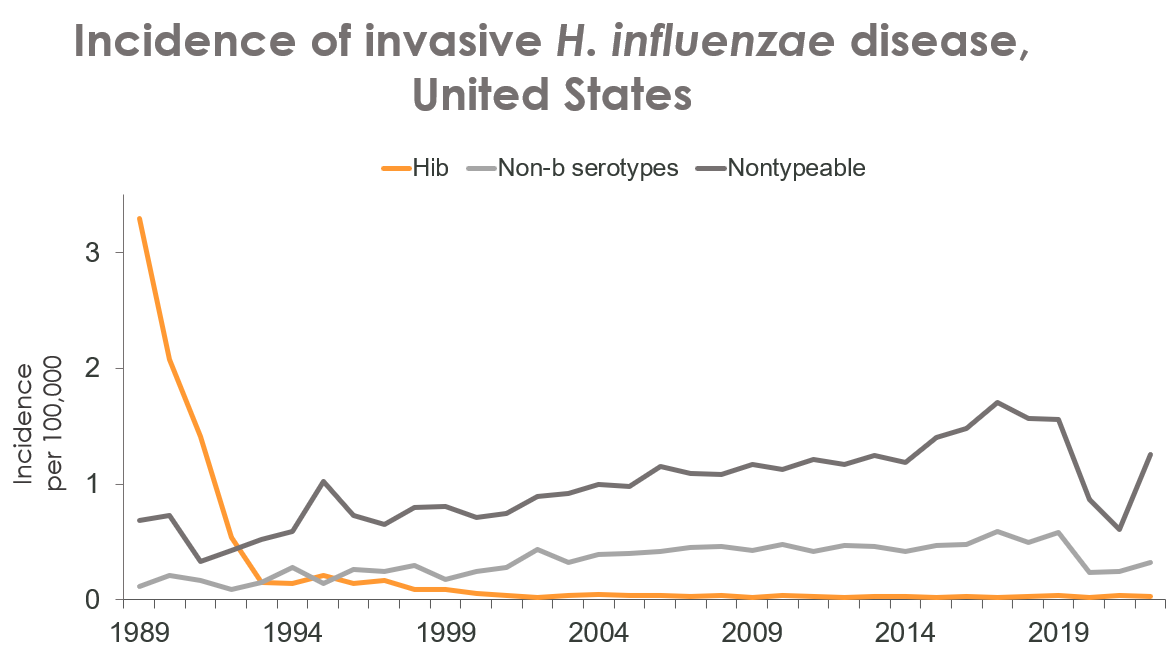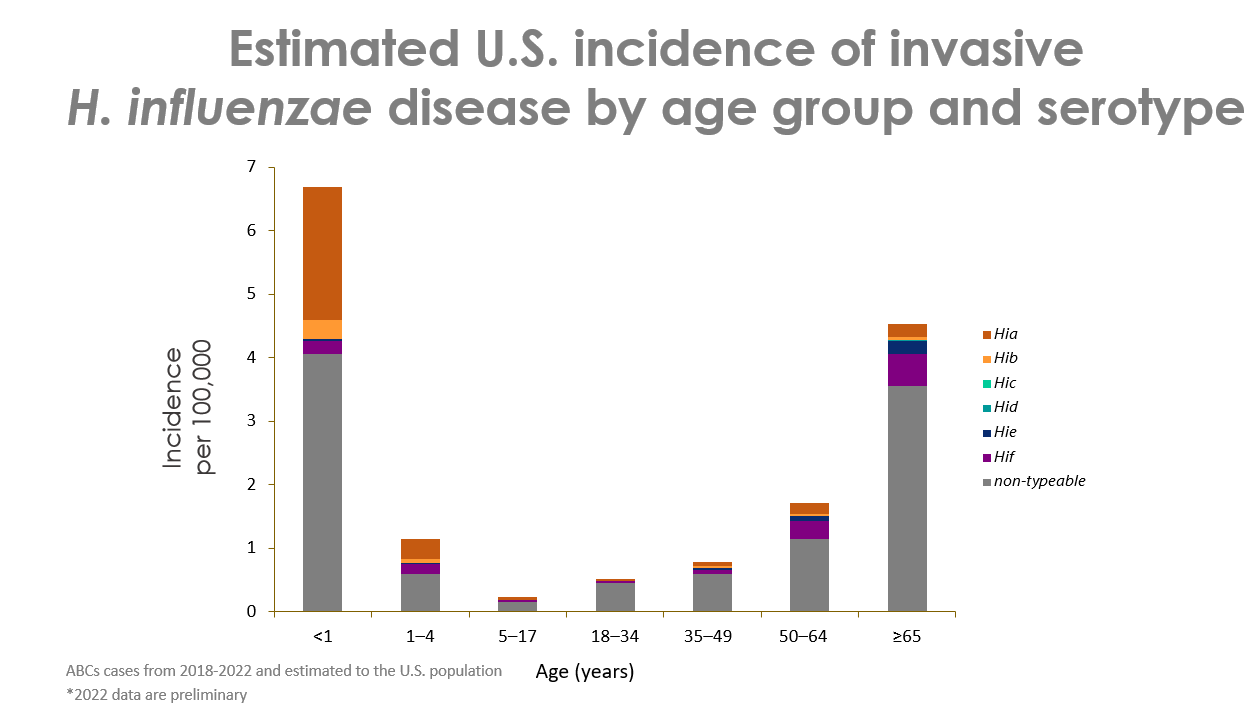

Invasive H. influenzae disease is a nationally notifiable disease.
CDC collects national information about invasive H. influenzae disease through the National Notifiable Diseases Surveillance System (NNDSS). CDC receives NNDSS data each week.
Keep Reading: Learn More About NNDSSCDC also collects information from laboratories in 10 areas of the country through Active Bacterial Core surveillance (ABCs). ABCs is part of CDC's Emerging Infections Program.
Keep Reading: Active Bacterial Core surveillance (ABCs)The epidemiology of invasive H. influenzae disease has changed since the United States began using Hib vaccines. Hib vaccination began for children in 1987 and for infants in 1990.
Since then, the annual incidence of invasive disease in children younger than 5 years old has changed:
 by serotype b, other serotypes excluding b, and nontypeable bacteria in the United States from 1989 through 2022." />
by serotype b, other serotypes excluding b, and nontypeable bacteria in the United States from 1989 through 2022." />
The Council of State and Territorial Epidemiologists (CSTE) released the most recent case definition for H. influenzae disease in 2015.